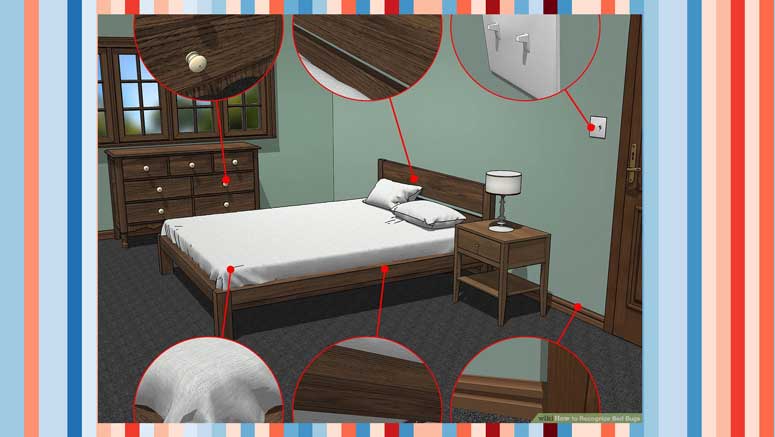Bed bugs [1] are blood-eating insects that can become quite troublesome and hard to get rid off. They require blood to breed and blood meals to survive; but unlike mosquitoes, they can’t fly to get to their food. And, unlike ticks, they don’t have the convenience of living on a host. Bed bugs must find another way to get the food they need. So, basically their strategy is to hide close to where their food sources will be (humans or other animals with blood) and wait until it is safe to come out and feed.
Bed bugs can be hard to see, because they are very small and they have transparent skin. But once they get to their adult size, it is hard to miss these bugs, unless the environment they have chosen is cluttered enough to conceal them. They aren’t drawn to clutter, but clutter will help these bugs avoid detection longer. This has made people believe that bed bugs are drawn to filthy places, you should know that filth and clutter are not the cause of bed bugs. These bugs can live in the cleanest and neatest of environments. It is just more difficult for them to continue to avoid detection.
The big question is, what causes bed bugs? The most apparent cause of bed bugs is a lack of awareness. The more you know about bed bugs and the causes of bed bugs, the greater success you will have at keeping them out of your home or business.
So, what causes bed bug infestation? Most people believe bed bug infestation is caused by filth but this is a misconception. These bugs are not drawn to decay. They can live in any environment, as long as they have access to their food source. Understanding this is vital in preventing a bed bug infestation.
Where Do Bed Bugs Live

You are mistaken if you think they only live in the bed, despite their names. They can also be found in different parts of the house. You can see them on all sorts of indoor objects, including:
- Mattresses and box springs
- Sheets and blankets
- Areas around your bed frame
- Headboards
- Areas of clutter that aren’t moved often, such as piles of clothes
- Beneath peeling or cracking paint or wallpaper
- Underneath carpets on outer edges, such as near baseboards
- Seams of upholstered furniture
- Beneath plates covering electrical outlets or light switches
- Clothes
- Suitcases or other luggage items
- Cardboard boxes
Bedbugs are quick crawlers, too. They can move up to four feet every minute and go long distances unimpeded across carpets, wood, and tile. This is why you’ll find them in every corner of the hotel, homes, apartment complexes, no matter the size of the building.













